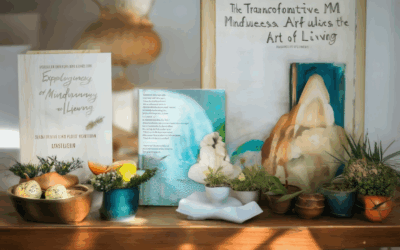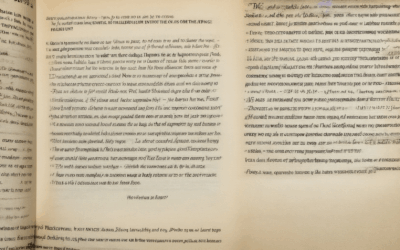Change is an inevitable part of life, shaping who we are and how we grow. Yet, how often do we take the time to reflect on our own journey, to craft a personal narrative that captures the essence of our experiences? A personal narrative on change is more than just a story—it’s a powerful tool for self-discovery, learning, and inspiration. Whether you’re recounting a pivotal moment, detailing a transformation, or simply sharing your thoughts, your personal narrative holds the power to resonate with others and leave a lasting impact.

Examples of Personal Narrative
- The Journey of Self-Discovery: A personal narrative detailing one’s quest for identity and purpose, often through travel or significant life events.
- Family Ties: Stories exploring the impact of family relationships, whether past or present, on an individual’s life trajectory.
- Career Challenges: Accounts of professional journeys, highlighting obstacles overcome, lessons learned, and career growth.
- LIFE LESSONS: Reflective pieces where individuals share wisdom gained from personal experiences, offering insights into life’s complexities.
- Love and Loss: Narratives centered around romantic relationships, loss, and the healing process that follows.
- Homecoming: Stories about returning to a place of significance, whether physically, emotionally, or mentally.
- Identity Crisis: Explorations of personal identity, often involving moments of doubt or transformation.
- Redemption: Tales of personal reinvention and recovery from past mistakes or hardships.
- Struggles and Triumphs: Stories highlighting overcoming adversity, achieving goals, and learning resilience.
- Memoirs of Childhood: Recollections of growing up, focusing on pivotal moments and family dynamics.
For more engaging personal narratives and storytelling tips, visit Peter Spirito .
How to Change Your Personal Narrative
Changing your personal narrative involves redefining how you perceive and present your life story. Here are some effective strategies to help you achieve this:
- Journaling:** Write regularly about your thoughts and feelings. This process helps you identify recurring themes and beliefs that may no longer serve you.
- Challenge Limiting Beliefs:** Question the validity of negative self-talk. Replace limiting beliefs with affirmations that reflect your growth and potential.
- Reframe Experiences:** Practice viewing challenges and setbacks as stepping stones for growth rather than proof of inadequacy.
- Seek New Perspectives:** Engage with literature, mentors, or communities that offer alternative viewpoints to expand your understanding of yourself.
- Practice Gratitude:** Regularly reflect on what you’re thankful for, fostering a more positive outlook on life.
- Explore New Interests:** Pursue hobbies or activities that help you discover new aspects of yourself, potentially reshaping your identity.
- Surround Yourself with Supportive People:** Choose friends and associates who uplift and encourage your personal growth.
- Let Go of Outdated Identities:** Identify and release roles or personas that no longer align with your current values and goals.
By combining these strategies, you can craft a narrative that better reflects your authentic self and evolves alongside your life experiences. Remember, change takes time, so be patient and persistent in your efforts.

Good Sentence Starters for Personal Narrative
The following sentence starters can help you kick off your personal narrative effectively:
- The moment I realized…
- I remember the time when…
- It was a typical day, until…
- As I stood there, I noticed…
- That was the day I decided…
- Growing up, I never imagined…
- One thing I’ve always believed…
- Every great story begins with…
- Remember that time…
- When I look back at my life…
- The scent of the ocean…
- The sound of the waves…
- The taste of the air…
- The feel of the wind…
- The sight of the sunrise…
- The warmth of the sun…
- The coolness of the night…
- I couldn’t help but wonder…
- Have you ever wondered…
- Life is full of unexpected moments…
- Sometimes, the smallest things…
- Throughout my journey…
- I’ve learned that every experience…
- Each memory holds a lesson…
- Reflecting on my past…
- I’m reminded of the importance…
- Over the years, I’ve come to realize…
- One of the most valuable lessons…
- Looking back, I see now…
- I’ve always been curious about…
- Exploring different cultures…
- Traveling has taught me…
- Meeting new people…
- Learning from others…
- Every journey starts with a single step…
- Change often begins with…
- Growth happens when we…
- Success is the result of…
- Failure teaches us resilience…
- Happiness is found in…
- Purpose emerges when…
- Storytelling is a powerful tool…
- It allows us to share our…
- Connect with others…
- And reflect on our lives…
These starters can help you begin your personal narrative in a meaningful and engaging way. Whether you’re writing about your experiences, reflecting on life, or sharing a story, these sentences can guide you toward a compelling beginning.
For more tips and resources on storytelling, visit Peter Spirito .

How to Start Your Personal Narrative
Starting your personal narrative requires a strategic approach to capture the reader’s attention and set the tone for your story. Here are some effective techniques:
- Vivid Scene or Emotional Moment:** Begin with a specific, vivid scene or emotional moment that resonates with universal feelings. This could be a place, an event, or a personal experience that evokes strong emotions.
- Sensorial Details:** Infuse your narrative with sensory details—describe what you see, hear, smell, taste, or touch—to make the scene immersive.
- Purpose-Oriented Approach:** Consider the purpose of your narrative. Are you sharing a story to illustrate personal growth, convey a lesson, or explore a theme?
- Universal Themes:** Tap into universal themes such as love, loss, fear, or discovery to make your narrative relatable to a broad audience.
- Tone and Style:** Decide on the tone—reflective, introspective, or storytelling—and adjust your presentation accordingly to match your intended style.
- Pacing:** Balance between immediate engagement and gradual build-up, considering whether to start with action or a slower progression to create suspense.
- Audience Consideration:** Keep your narrative relatable for a general audience while allowing for specificity if addressing a niche group.
- Story Direction:** Ensure your opening sets the stage for the themes, conflicts, and resolutions that follow, guiding the reader through your narrative’s trajectory.
How to Pick a Personal Narrative Topic
To craft an engaging and meaningful personal narrative, start by reflecting on your passions, experiences, and interests. Here’s a structured approach to help you select a topic:
- Identify Interests and Experiences:** Begin by listing subjects that excite you or topics you’ve explored. Consider hobbies like travel, cooking, learning, or personal growth.
- Narrow Down to a Specific Angle:** Choose a niche within your interests. For example, instead of general travel, focus on “cultural immersion” or “adventure travel.”
- Consider Themes:** Center your story around a theme like identity, change, or overcoming challenges. This adds depth and direction to your narrative.
- Think About Your Audience:** Tailor your topic to resonate with readers who share similar interests or goals, whether they’re fellow travelers, food enthusiasts, or learners.
- Incorporate SEO Best Practices:** Use keywords related to your topic to enhance visibility. For instance, if your theme is “overcoming failure,” integrate this into your title and content naturally.
- Check for Unique Angles:** Ensure your topic offers a fresh perspective. Look for ways to present it through your unique experiences and viewpoints.
- Purpose and Tone:** Decide if you aim to inspire, inform, or entertain. This choice will shape the tone and content of your narrative.
- Reflect on Emotional Resonance:** Recall stories that left a lasting impact. Themes like overcoming challenges or discovering oneself can be powerful starting points.
- Balance Nicheness and Appeal:** Aim for a topic that’s specific enough to stand out but broad enough to attract an audience. Add a unique twist to capture attention.
Case Study: Cultural Immersion Through Travel
Imagine choosing a topic centered around cultural immersion. This could involve documenting your journey through diverse cultures, exploring their traditions, foods, and customs. Share personal anecdotes and reflections to make your narrative relatable and enriching.
Steps to Refine Your Topic:
- Brainstorm:** List potential topics and narrow them down based on your passion and unique experiences.
- Research:** Identify gaps in the market or underrepresented angles to give your topic a fresh perspective.
- Define Scope:** Set boundaries to keep your narrative focused yet comprehensive.
- Engage Readers:** Use storytelling techniques to hook readers and maintain their interest throughout.
By following these steps, you can select a personal narrative topic that resonates with your audience, showcases your personality, and provides valuable insight or entertainment. Remember, the key is to stay true to yourself and your unique experiences.

How to Start a Narrative Example
Starting a narrative effectively is crucial to captivate readers from the very beginning. Here are several approaches to craft a compelling opening:
- Use a Hook or Question: Pose a intriguing question or statement to pique curiosity. For instance, “Have you ever wondered why the sun sets every evening?”
- Set the Scene Vividly: Paint a clear mental image of the setting. For example, “The old clock tower stood tall over the village square, its bells tolling softly in the distance.”
- Start with Action: Begin with a dynamic verb to immediately engage the reader. Such as, “John ran through the park, his breath visible in the cold air.”
- Introduce Conflict or Problem: Present a challenge or dilemma to draw readers in. For example, “The storm had come suddenly, and now the river was rising rapidly, threatening the nearby village.”
- Offer a Unique Perspective: Provide an unexpected twist to capture attention. Such as, “The sun hadn’t risen yet, but the city was already alive with the hum of early commuters.”
- Tailor the Opening Based on Genre: Adjust the approach depending on the type of story. A mystery might begin with an unsolved event, while a love story could start with a fateful meeting.
By employing these techniques, you can create a narrative that hooks readers and sets the stage for an engaging story. Remember to maintain consistency in tone and style throughout your writing to keep the audience invested.
For more tips and inspiration, explore our collection of storytelling guides designed to help you craft memorable narratives.




0 Comments